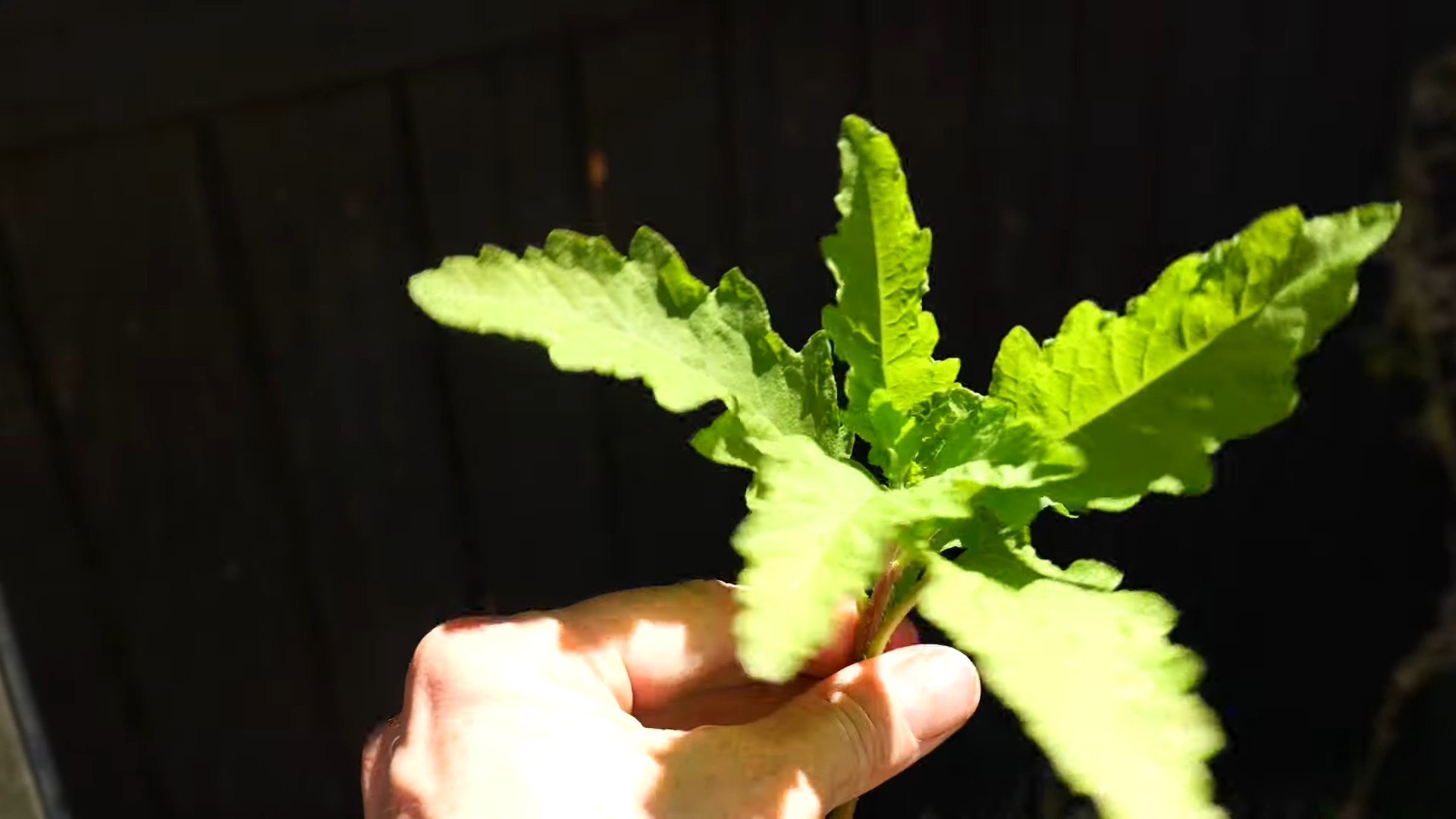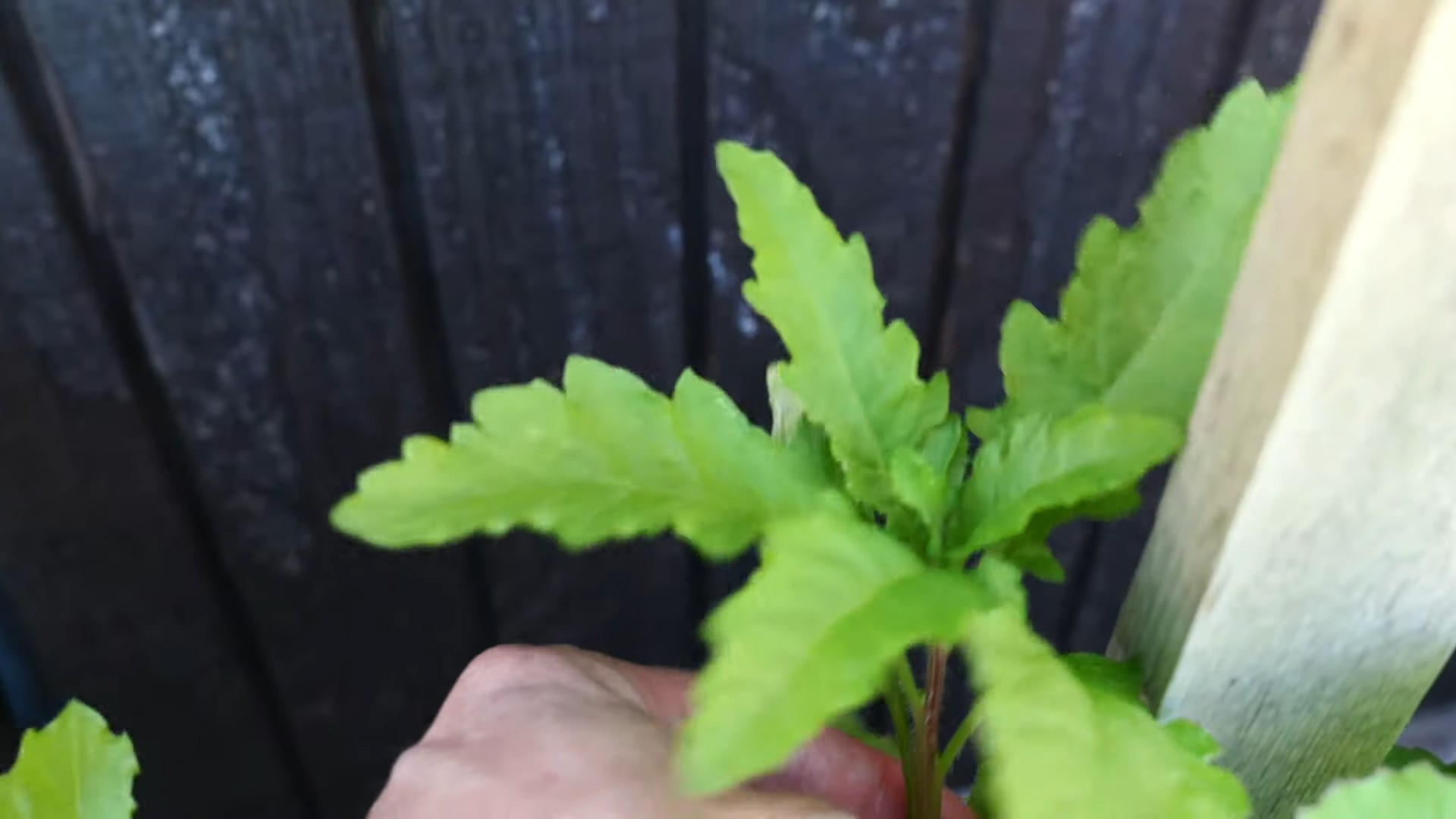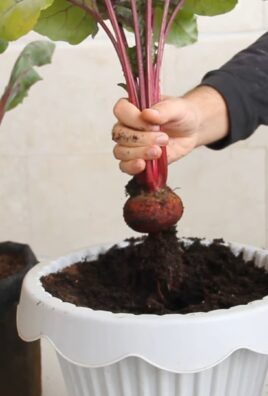Grow Epazote Indoors? Absolutely! Have you ever dreamt of having fresh, aromatic herbs right at your fingertips, no matter the season? Imagine whipping up a batch of authentic Mexican cuisine and simply snipping off a few sprigs of epazote, bursting with flavor, from your very own indoor garden. That’s the magic we’re unlocking today!
Epazote, also known as wormseed, has a rich history, deeply rooted in Mesoamerican cultures. For centuries, it’s been used not only as a culinary herb, adding a distinctive citrusy and slightly medicinal note to dishes like black beans and quesadillas, but also for its medicinal properties. It’s a staple in traditional Mexican cooking, and now, you can easily bring that tradition into your home.
Why should you learn how to grow epazote indoors? Well, for starters, it gives you control over the quality and freshness of your herbs. No more wilted, overpriced bunches from the grocery store! Plus, growing your own epazote is incredibly rewarding and surprisingly easy, even if you don’t have a green thumb. We’ll guide you through simple DIY tricks and hacks to ensure your epazote thrives indoors, providing you with a constant supply of this unique and flavorful herb. Let’s get started and transform your windowsill into a mini herb garden!

Growing Epazote Indoors: A Comprehensive Guide
Hey there, fellow plant enthusiasts! Ever wanted to have fresh, flavorful epazote right at your fingertips? Well, you’re in luck! Growing epazote indoors is totally doable, and I’m here to walk you through every step of the process. Trust me, it’s easier than you think, and the reward of having this unique herb readily available for your culinary adventures is well worth the effort.
What is Epazote?
Before we dive in, let’s quickly cover what epazote actually is. Epazote (Dysphania ambrosioides) is a pungent herb native to Central and South America. It’s a staple in Mexican cuisine, often used in dishes like black beans, quesadillas, and soups. It has a distinctive flavor that some describe as a mix of citrus, anise, and mint. Beyond its culinary uses, epazote is also traditionally used for its medicinal properties, particularly as a digestive aid.
Why Grow Epazote Indoors?
Growing epazote indoors offers several advantages:
* Year-Round Availability: You can enjoy fresh epazote regardless of the season.
* Control Over Growing Conditions: You have complete control over the environment, ensuring optimal growth.
* Pest and Disease Management: Indoor growing minimizes the risk of pests and diseases.
* Convenience: Having fresh herbs readily available in your kitchen is incredibly convenient.
* Space Saving: If you don’t have a garden, growing indoors is a great alternative.
Materials You’ll Need
Okay, let’s gather our supplies. Here’s what you’ll need to get started:
* Epazote Seeds: You can find these online or at your local nursery.
* Seed Starting Tray or Small Pots: These will be used to germinate the seeds.
* Potting Mix: Use a well-draining potting mix specifically designed for starting seeds.
* Larger Pot (at least 12 inches in diameter): This will be the permanent home for your epazote plant.
* Well-Draining Potting Soil: Choose a good quality potting soil that retains moisture but drains well.
* Grow Lights (optional but recommended): If you don’t have a sunny window, grow lights will provide the necessary light for healthy growth.
* Watering Can or Spray Bottle: For gentle watering.
* Fertilizer (optional): A balanced liquid fertilizer can help boost growth.
* Small Shovel or Trowel: For transplanting.
Germinating Epazote Seeds
This is where the magic begins! Germinating the seeds is the first step to having your own epazote plant.
1. Prepare the Seed Starting Tray or Pots: Fill your seed starting tray or small pots with the seed starting mix. Gently pat down the soil to create a level surface.
2. Sow the Seeds: Sprinkle the epazote seeds thinly over the surface of the soil. They are quite small, so don’t worry about spacing them perfectly.
3. Cover the Seeds Lightly: Cover the seeds with a very thin layer of seed starting mix. Epazote seeds need light to germinate, so don’t bury them too deep.
4. Water Gently: Use a spray bottle to mist the soil thoroughly. You want the soil to be moist but not waterlogged.
5. Provide Warmth and Light: Place the seed starting tray or pots in a warm location with plenty of light. A sunny windowsill or under grow lights is ideal. The ideal temperature for germination is between 70-75°F (21-24°C).
6. Maintain Moisture: Keep the soil consistently moist by misting it regularly. Don’t let the soil dry out.
7. Wait for Germination: Epazote seeds typically germinate within 7-14 days. Be patient!
Transplanting Seedlings
Once your seedlings have developed a few sets of true leaves (the leaves that look like miniature versions of the adult plant’s leaves), it’s time to transplant them into a larger pot.
1. Prepare the Larger Pot: Fill the larger pot with well-draining potting soil. Leave about an inch of space at the top of the pot.
2. Carefully Remove Seedlings: Gently loosen the soil around the seedlings in the seed starting tray or pots. Use a small shovel or trowel to carefully lift the seedlings out, being careful not to damage the roots.
3. Plant the Seedlings: Make a small hole in the potting soil in the larger pot. Place the seedling in the hole and gently backfill with soil. Space the seedlings about 4-6 inches apart if you’re planting multiple seedlings in the same pot.
4. Water Thoroughly: Water the newly transplanted seedlings thoroughly.
5. Provide Support (Optional): If your seedlings are a bit leggy (tall and spindly), you can provide them with a small stake or support to help them stand upright.
Caring for Your Epazote Plant
Now that your epazote plant is happily settled in its new home, it’s time to provide it with the care it needs to thrive.
* Light: Epazote needs at least 6 hours of sunlight per day. If you don’t have a sunny window, use grow lights to supplement the natural light. Place the grow lights about 6-12 inches above the plant.
* Watering: Water your epazote plant when the top inch of soil feels dry to the touch. Avoid overwatering, as this can lead to root rot. Make sure the pot has good drainage.
* Temperature: Epazote prefers temperatures between 60-80°F (15-27°C). Avoid exposing it to extreme temperatures or drafts.
* Humidity: Epazote doesn’t require high humidity, but it appreciates a slightly humid environment. You can increase humidity by placing a tray of water near the plant or using a humidifier.
* Fertilizing: Fertilize your epazote plant every 2-4 weeks with a balanced liquid fertilizer. Follow the instructions on the fertilizer label.
* Pruning: Prune your epazote plant regularly to encourage bushier growth. Pinch off the tips of the stems to promote branching. You can also remove any yellow or dead leaves.
* Pest Control: Keep an eye out for pests like aphids, spider mites, and whiteflies. If you notice any pests, treat them with insecticidal soap or neem oil.
* Harvesting: You can start harvesting epazote leaves once the plant is about 6-8 inches tall. Simply snip off the leaves as needed. The flavor is strongest just before the plant flowers.
Troubleshooting
Even with the best care, you might encounter some challenges along the way. Here are a few common problems and how to address them:
* Yellowing Leaves: This could be a sign of overwatering, underwatering, or nutrient deficiency. Check the soil moisture and adjust your watering accordingly. If the problem persists, try fertilizing the plant.
* Leggy Growth: This is usually caused by insufficient light. Move the plant to a sunnier location or use grow lights.
* Pests: Inspect your plant regularly for pests. Treat any infestations promptly with insecticidal soap or neem oil.
* Slow Growth: This could be due to a variety of factors, including insufficient light, poor soil, or lack of nutrients. Make sure your plant is getting enough light, water, and fertilizer.
Harvesting and Using Epazote
The best part! You can start harvesting your epazote leaves as soon as the plant is big enough. Simply snip off the leaves as needed. The flavor is most intense just before the plant flowers.
Here are some ideas for using your homegrown epazote:
* Black Beans: Add a few sprigs of epazote to your black beans while they’re cooking. It helps to reduce gas and adds a unique flavor.
* Quesadillas: Sprinkle chopped epazote into your quesadillas for a flavorful twist.
* Soups and Stews: Add epazote to your soups and stews for a boost of flavor.
* Salsas: Incorporate chopped epazote into your homemade salsas.
* Teas: Brew epazote leaves into a tea for its digestive benefits.
Encouraging Bushier Growth
To get the most out of your epazote plant, you’ll want to encourage it to grow bushy and full. Here’s how:
* Pinching: Regularly pinch off the tips of the stems. This encourages the plant to branch out and produce more leaves.
* Pruning: Prune the plant regularly to remove any dead or yellowing leaves. This will help to improve air circulation and prevent disease.
* Rotating: Rotate the plant regularly to ensure that all sides receive equal amounts of light. This will help to prevent

Conclusion
So, there you have it! Growing epazote indoors is not only achievable, but it’s also a rewarding experience that brings a unique and vibrant flavor right to your fingertips. Forget relying on limited grocery store availability or dried substitutes; with a little effort, you can have fresh, aromatic epazote whenever you need it.
This DIY trick is a must-try for several compelling reasons. First and foremost, it grants you unparalleled control over the quality of your epazote. You know exactly what goes into nurturing your plant, ensuring it’s free from harmful pesticides and herbicides. This is particularly important for a herb like epazote, where the flavor profile is so delicate and easily affected by external factors. Secondly, growing your own epazote is incredibly cost-effective. A single packet of seeds or a small starter plant can yield a continuous supply of this flavorful herb for months, if not years, saving you money in the long run.
Beyond the practical benefits, growing epazote indoors offers a unique connection to your food. There’s something deeply satisfying about nurturing a plant from seed to harvest, and then using it to create delicious meals. It fosters a greater appreciation for the ingredients we use and the effort that goes into producing them.
Don’t be afraid to experiment with variations! Try different pot sizes to see what works best for your space. Consider using a self-watering planter to simplify the watering process, especially if you’re prone to forgetting. You can also explore different soil mixes to optimize drainage and nutrient availability. Some gardeners even add a small amount of lime to the soil, as epazote prefers slightly alkaline conditions.
Furthermore, think about companion planting. While grown indoors, you can still place your epazote near other herbs that benefit from similar conditions, such as cilantro or oregano. This can create a mini-herb garden that thrives together.
The possibilities are endless, and the only limit is your imagination. We strongly encourage you to give this DIY trick a try. It’s a simple, affordable, and incredibly rewarding way to enhance your culinary creations and connect with nature.
Once you’ve embarked on your indoor epazote growing journey, we’d love to hear about your experience! Share your tips, tricks, and successes (and even your challenges!) in the comments below. Let’s build a community of indoor epazote enthusiasts and learn from each other. Did you find a particular soil mix that worked wonders? Did you discover a unique way to use your homegrown epazote in a recipe? Share it all! Your insights could be invaluable to other aspiring indoor gardeners. So, grab your seeds, potting mix, and a sunny windowsill, and get ready to experience the joy of growing your own fresh epazote. Happy gardening!
Frequently Asked Questions (FAQ)
What exactly is epazote, and what does it taste like?
Epazote (Dysphania ambrosioides) is a leafy herb native to Central and South America, particularly Mexico. It’s a staple ingredient in many traditional Mexican dishes, especially bean-based recipes. The flavor is quite unique and often described as a combination of anise, citrus, and mint, with a slightly pungent, almost medicinal undertone. Some people also detect hints of petroleum or camphor. The flavor can be quite strong, so it’s best to use it sparingly at first until you get a feel for its intensity.
Why is epazote often used in bean dishes?
Epazote is traditionally used in bean dishes for two primary reasons. First, it’s believed to help reduce flatulence caused by eating beans. While scientific evidence is limited, many people swear by its effectiveness. Secondly, epazote adds a distinctive and complementary flavor to beans, enhancing their overall taste and making them more palatable. It’s a key ingredient in dishes like black beans, refried beans, and bean soups.
How much sunlight does indoor epazote need?
Epazote thrives in bright, direct sunlight. Ideally, it should receive at least 6-8 hours of sunlight per day. If you don’t have a south-facing window that provides sufficient sunlight, you may need to supplement with a grow light. Position the grow light a few inches above the plant and keep it on for 12-14 hours per day. Insufficient sunlight can lead to leggy growth and a less flavorful herb.
What type of soil is best for growing epazote indoors?
Epazote prefers well-draining soil that is slightly alkaline. A good potting mix for epazote would be a combination of:
* Potting soil: Provides a base for the plant to grow.
* Perlite or vermiculite: Improves drainage and aeration.
* Sand: Further enhances drainage.
* Lime: To increase the soil’s pH level, making it slightly alkaline.
You can purchase pre-made potting mixes specifically designed for herbs, or you can create your own by mixing these ingredients in the appropriate proportions. Aim for a mix that is light, airy, and doesn’t retain too much moisture.
How often should I water my indoor epazote plant?
Water your epazote plant when the top inch of soil feels dry to the touch. Avoid overwatering, as this can lead to root rot. Ensure that the pot has drainage holes to allow excess water to escape. During the warmer months, you may need to water more frequently than during the cooler months. Check the soil moisture regularly and adjust your watering schedule accordingly.
How do I harvest epazote?
You can start harvesting epazote leaves once the plant is about 6-8 inches tall. Simply snip off the leaves with scissors or pruning shears. Avoid removing more than one-third of the plant at a time, as this can stress the plant and hinder its growth. Regular harvesting will encourage the plant to produce more leaves. You can use the fresh leaves immediately or dry them for later use.
Can I dry epazote for later use?
Yes, you can easily dry epazote for later use. There are several methods you can use:
* Air drying: Tie a bunch of epazote stems together and hang them upside down in a cool, dry, and well-ventilated place. Allow them to dry for several weeks until the leaves are brittle.
* Oven drying: Spread the epazote leaves in a single layer on a baking sheet and bake them in a low oven (around 170°F or 77°C) for a few hours, until they are dry and brittle.
* Dehydrator: Use a food dehydrator to dry the epazote leaves according to the manufacturer’s instructions.
Once the leaves are completely dry, store them in an airtight container in a cool, dark place.
Are there any pests or diseases that commonly affect indoor epazote?
While epazote is relatively pest-resistant, it can occasionally be affected by common indoor plant pests such as aphids, spider mites, and whiteflies. Regularly inspect your plant for signs of infestation, such as small insects on the leaves or webbing. If you detect pests, you can try washing the plant with insecticidal soap or neem oil. Overwatering can also lead to fungal diseases, so be sure to allow the soil to dry out slightly between waterings.
Is epazote safe to consume?
Epazote is generally safe to consume in small to moderate amounts as a culinary herb. However, it contains a compound called ascaridole, which can be toxic in large doses. Pregnant women and individuals with liver or kidney problems should avoid consuming epazote. It’s always best to use epazote in moderation and to consult with a healthcare professional if you have any concerns.
Can I grow epazote from cuttings?
Yes, you can propagate epazote from cuttings. Take a 4-6 inch cutting from a healthy stem, remove the lower leaves, and place the cutting in a glass of water. Change the water every few days. After a few weeks, roots should begin to develop. Once the roots are about an inch long, you can transplant the cutting into a pot filled with well-draining potting mix. Keep the soil moist until the plant is established.




Leave a Comment